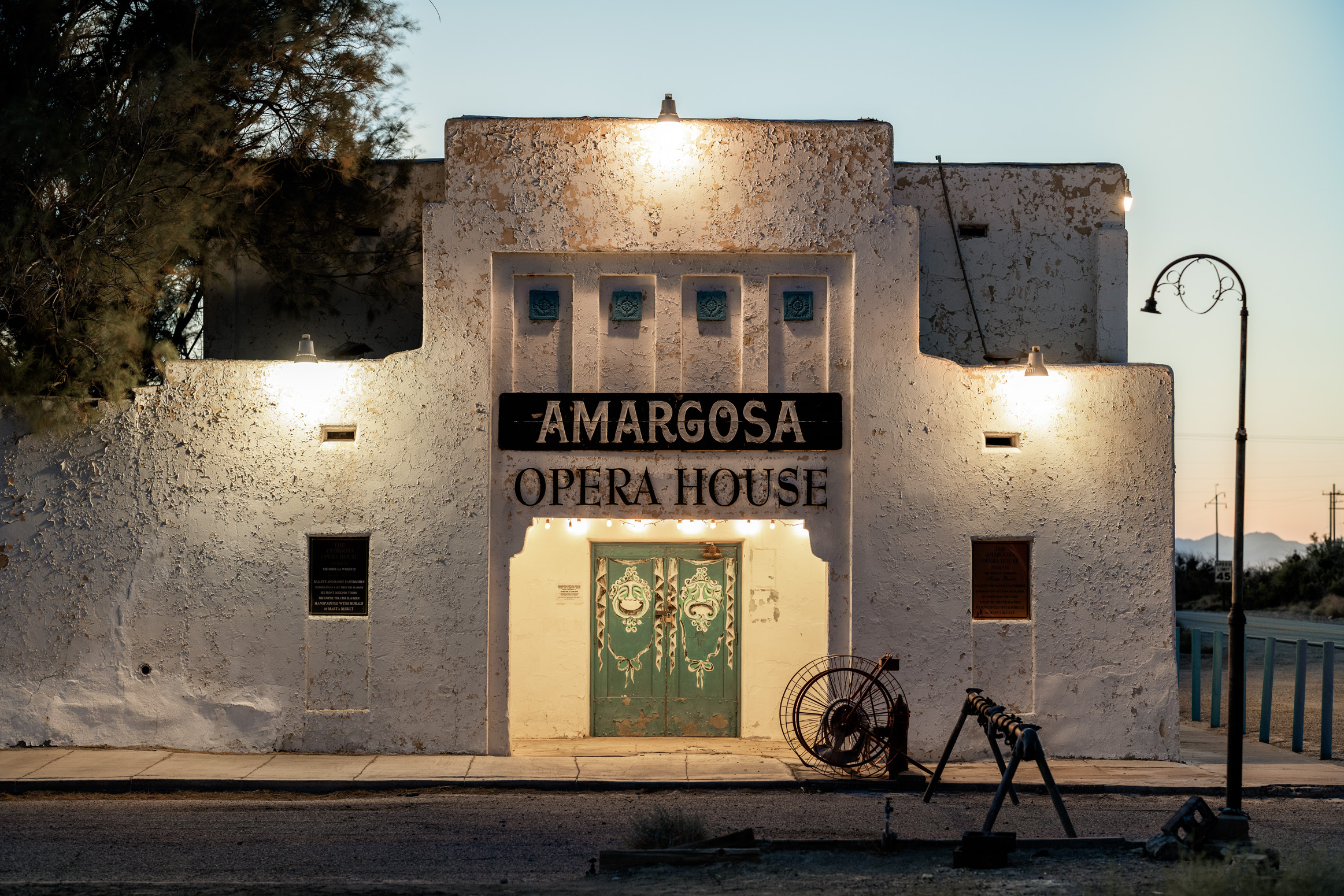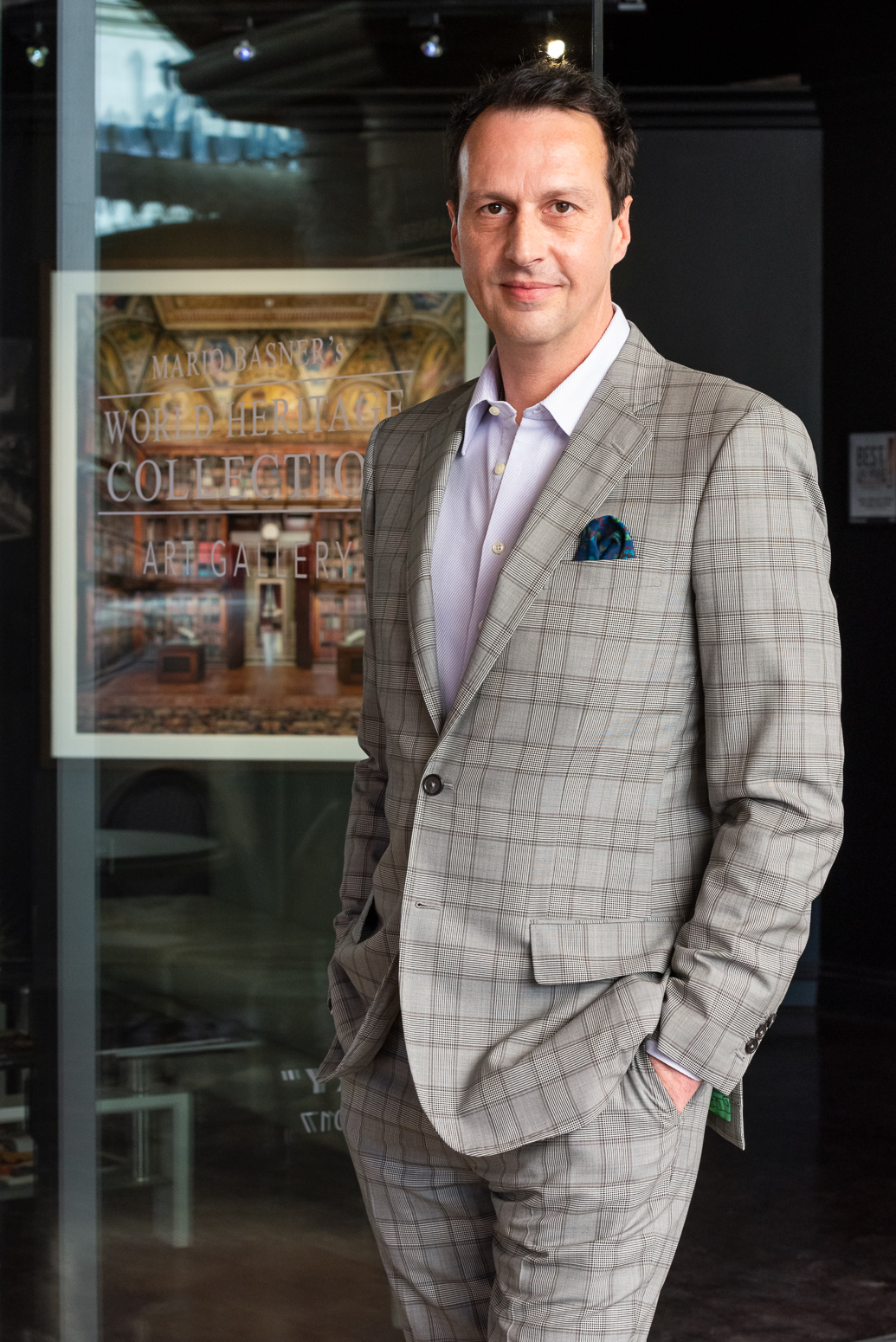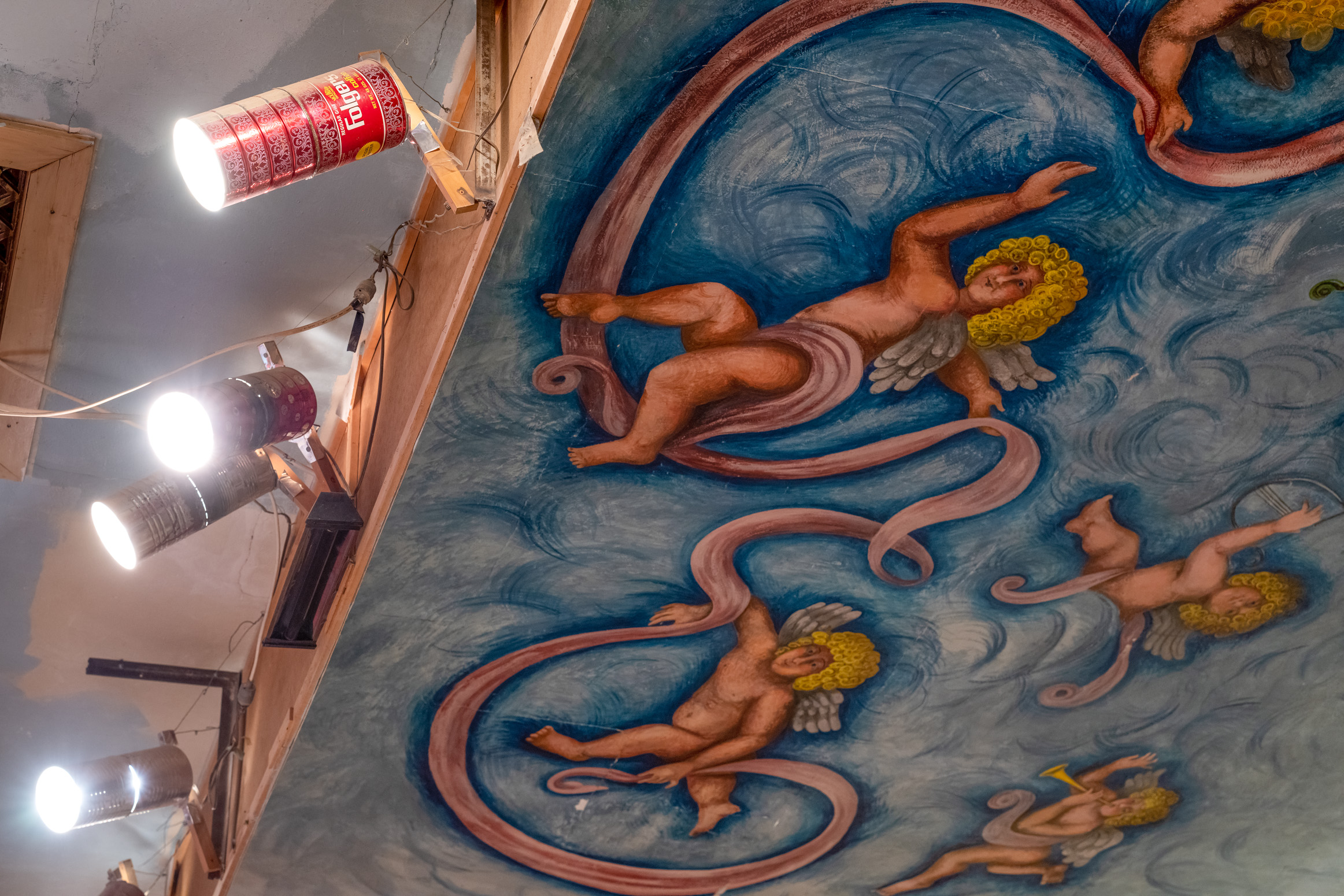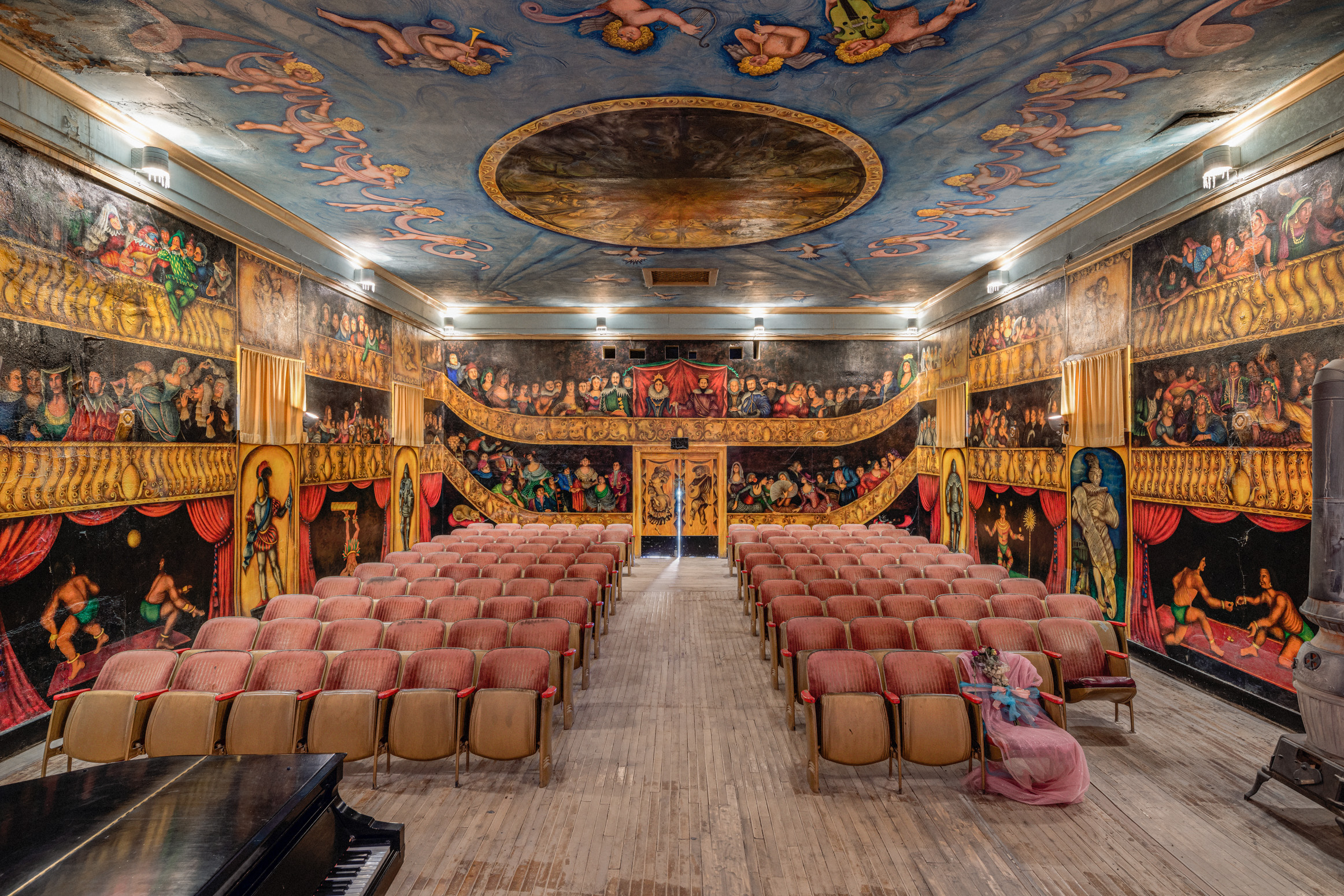 On the eastern side of Mojave Desert, near the California-Nevada border hides the tiny unincorporated town of Amargosa. With summer temperatures soaring into the 100-120s, perhaps its unsurprising the town’s population today is fewer than four people. But this near ghost town is home to a local legend that has enchanted West-Coast and cross-country visitors for half a century: the Amargosa Opera House. The curious tale pricked the interest of Mario Basner, who set out to immortalize the site with photography, using ZEISS Otus lenses and his Nikon D850 to capture the details of the past.
On the eastern side of Mojave Desert, near the California-Nevada border hides the tiny unincorporated town of Amargosa. With summer temperatures soaring into the 100-120s, perhaps its unsurprising the town’s population today is fewer than four people. But this near ghost town is home to a local legend that has enchanted West-Coast and cross-country visitors for half a century: the Amargosa Opera House. The curious tale pricked the interest of Mario Basner, who set out to immortalize the site with photography, using ZEISS Otus lenses and his Nikon D850 to capture the details of the past.
German-born Basner is an award-winning photographer with a soft-spot and a keen eye for architectural imagery. His work can be seen at a permanent gallery in Las Vegas where his large-scale photography adorns the walls, inviting viewers to fall into the vibrant depth and complexity of structural marvels like Beelitz Sanitorium or New York City’s Morgan Library. With such a cultivated taste for discerning order and symmetry in man-made spaces, it is unsurprising that the story of a mysterious arthouse in the middle of nowhere could ignite Basner’s interest.
“I first heard about the Amargosa Opera House about four or five years ago,” recounts Basner. “I thought it just a novelty, until I heard the full backstory.” What was it that made this small settlement prominent only for its position at the junction of State Roads 127 and 190, so special that it had captured the imagination of visitors since the 1960s? ‘What’ was in fact a ‘who’: artist and dancer Marta Becket. “I found it to be a very American story. A week later, I went to see for myself.” Basner packed his camera and headed for Amargosa.
Marta Becket was a Broadway dancer in the 1950s and 60s. Dissatisfied with her work as a chorus girl, she and her husband left New York, setting out West to tour a one-woman show in 1967. A flat tire nearly stranded the couple, who limped into a rundown town officially called Death Valley Junction but better known as Amargosa, then with a population of just under 20. Then and now, a single intersection town, Becket went exploring while their tire was being repaired. She came to an abandoned building and peeked in through the back. “Something about it spoke to her,” says Basner. “She tracked down the building manager and asked to rent it.”
Becket threw herself into renovating the building. As soon as she could, she began to perform, bringing one-woman shows to life in the middle of the desert. “The Opera House became a legend, and people from California started traveling to see it. It wasn’t just her dancing that was extraordinary, but her painting as well.” Becket spent years painting the walls of her Opera house with the detail and vibrance reminiscent of a movie palace. The ceiling and walls depict cherubs, lively tableaus and a raucous renaissance-era audience, brimming with life and joy.
Basner arrived at Death Valley Junction and headed straight to the Opera House which has been maintained as a historic location by a nonprofit foundation after Becket’s passing. Entering the white adobe building the photographer was struck. “Historic spaces like these are places of creativity and cultural celebration. The Amargosa Opera House is no exception. While larger opera houses may have more grandeur, this space has a similar purpose—it’s about creativity, self-expression, and celebrating culture.”
He reached out to the foundation, determined to help tell the Opera House’s story through photography. With the foundation’s blessing Basner planned a two-day shoot that would work around the Opera House’s tour schedule. “The first day was focused on storytelling, while the second day was dedicated to capturing the archival details of the murals.” Basner wanted to move fast before the extreme heat of approaching summer made a shoot unbearable.
“I decided on the Zeiss Otus lenses with my Nikon D850 for the shoot because they’re tack-sharp and perfect for capturing the murals in the highest detail. That was crucial for creating a precise photographic record, especially as the building continues slowly falling apart,” Basner describes.
“The artistic shots involved storytelling techniques, like using a shallow depth of field to create specific perspectives. For the archival images of the murals, it was all about sharpness. I used an Otus 28mm, 55mm and 85mm. It was very dark inside, so I had to rely on long exposures—some up to 30 seconds. There’s a couple of handheld exposures as well as, with high ISOs up to 10,000 and an 80th of a second shutter. The photo of the main room is an HDR merge with multiple exposures, as the lighting is very low in there.”
Every inch of the Opera House has a story to tell. Through Basner’s lens the mural subjects whisper secrets, while Folger’s can lights hang over the stage, and Becket’s pink dress sits in the front row immortalized in crisp detail. “My main goal is always to capture the soul of the building,” says Basner. In his images the building comes alive, lit from within and welcoming.
“This story is very much about someone living life on their own terms and finding their own happiness,” Basner concludes. His photographs have been donated to the Amargosa Opera House which still holds historic tours 365 days of the year, according to their webpage. The legacy of Marta Becket continues on with visitors braving the desert sun to admire her art and stay a night at the Amargosa Opera House and Hotel.
To read the full interview with Mario Basner: https://lenspire.zeiss.com/photo/en/article/mario-basner-captures-the-artistic-beauty-of-the-amargosa-opera-house
Check out the photos: https://basnerfineart.com/viewing-room/1ce301d1e8f94fe08d6e49a2e5dee872/




